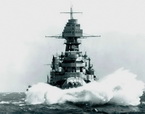Dutchie999
Posts: 117
Joined: 10/8/2014
Status: offline

|
quote:
ORIGINAL: jdkbph
I'm aware. I was thinking in total... either - or, yeah?
The whole idea of the JSF was one airframe for all services, and then some. If you dropped the A and C model, you would still need a weapons systems program to produce the B. One way or another those development costs would be incurred. Add to that the cost of developing a navalized F22 and you're carving out a large piece of budget most likely targeted for other things... like maybe subs and surface combatants and carriers.
It's a great what if, but I don't think it's at all practical.
IMHO
JD
The conclusion from this interesting paper:
quote:
1. Aircraft designed by a single country are not necessarily more expensive than those developed through international cooperation.
Gripen and Rafale were both developed by single countries, but end up costing substantially less than Eurofighter, which is produced by a four-nation consortium.
2. But single-nation development does not guarantee lower costs, as the three US fighters all cost substantially more than the two European “national” fighters, and are comparable to those of Eurofighter, a four-nation cooperative program.
Conversely, the projected unit cost of the only (partly) cooperative US aircraft, the Joint Strike Fighter, already exceeds that of Gripen and Rafale and of two other US aircraft, F-18E and F-15E, all of which are single-nation designs.
3. Long production runs do not always lead to less expensive aircraft.
The F-18E, with a production run of 462 aircraft, costs half as much again as the Rafale, which has a much smaller production run of 294 aircraft. JSF will cost twice as much as Rafale, despite having a production run almost ten times as large, and half as much again as the F-18E, whose production run is five times smaller. All three are modern, multirole combat aircraft.
4. While charges for major program stoppages and restructurings add to program costs, the increase is not proportional to the length of the hiatus. Both Eurofighter and Rafale programs were halted and restructured, adding eight or ten years to their development cycle, while F-15E, F- 18E and Gripen were not, yet this is not demonstrably reflected by the difference in their respective cost.
5. Continuity in development is the best way to avoid cost overruns. Gripen and F-18E (the F-15E is not significant in this respect) are the only programs to have avoided lengthy “freezes” and large-scale re-designs, and their production costs are notably lower than competitors’. Program unit costs of Rafale, Eurofighter and F-22 exploded after they were “suspended” for several years for major re-designs or funding shortfalls.
6. Although these aircraft were all developed beginning in the late 1980s, and for broadly similar missions, there is no common ratio between R&D and acquisition costs. Indeed, there seems to be no correlation whatsoever between these costs, reflecting each aircraft’s unique R&D itinerary and development history.
In other words, development costs are influenced not by so much be an aircraft’s actual capabilities as by a “smooth” management and development history.
(Disregard the F-35 numbers in that paper. Probably way too low now)
 Attachment (1) Attachment (1)
< Message edited by Dutchie999 -- 11/8/2014 9:39:07 AM >
|
 Printable Version
Printable Version












 New Messages
New Messages No New Messages
No New Messages Hot Topic w/ New Messages
Hot Topic w/ New Messages Hot Topic w/o New Messages
Hot Topic w/o New Messages Locked w/ New Messages
Locked w/ New Messages Locked w/o New Messages
Locked w/o New Messages Post New Thread
Post New Thread